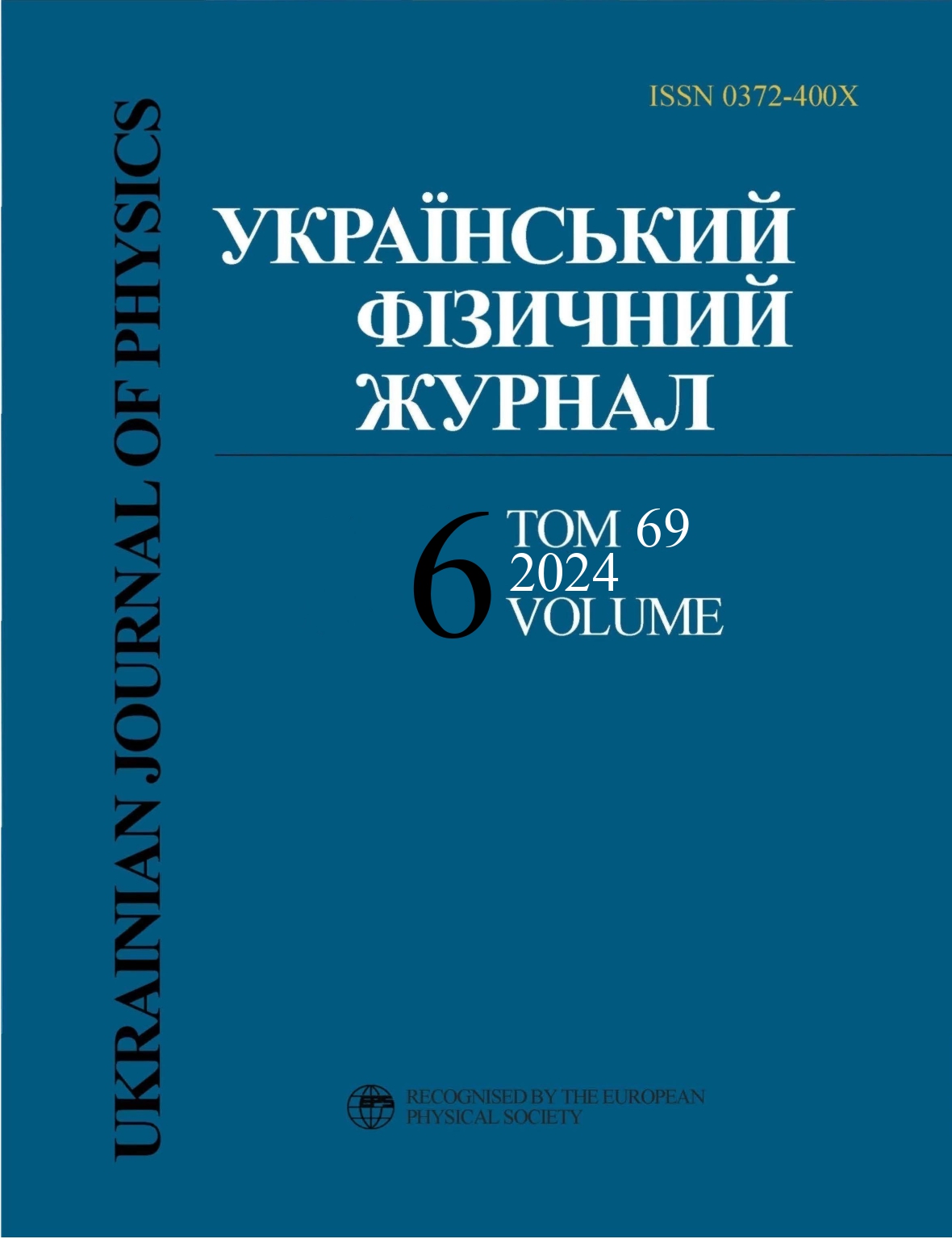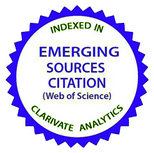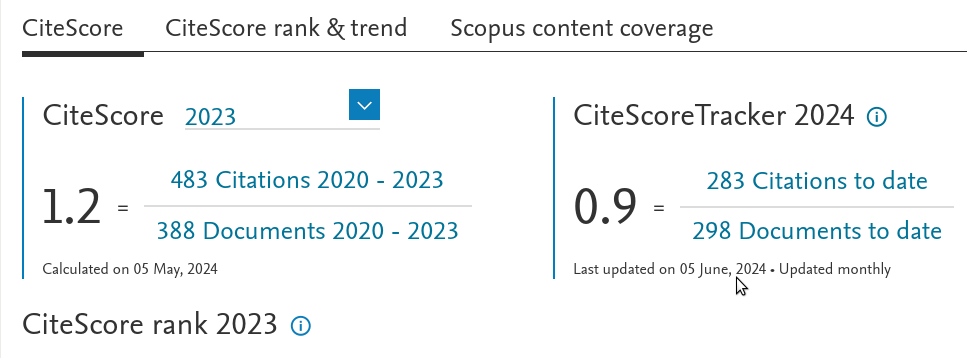Розрахунок параметрів анізотропії для скупчень галактик
DOI:
https://doi.org/10.15407/ujpe69.6.367Ключові слова:
галактики, скупчення галактик, поверхнева густина, параметр анiзотропiї, еволюцiяАнотація
У цiй роботi проаналiзовано данi спостережень за скупченнями галактик iз SDSS DR8. На основi спостережуваних даних з розподiлу поверхневої густини визначено величину параметра анiзотропiї для 31 кластера. Запропоновано класифiкацiю скупчень галактик на основi параметрiв анiзотропiї швидкостi, згiдно з якою скупчення подiляються на три групи. Дослiджено зв’язок мiж параметром анiзотропiї та основними фiзичними характеристиками скупчень галактик.
Посилання
G.O. Abell. The distribution of rich clusters of galaxies. Astrophysical J. Supplement. 3, 211 (1958).
https://doi.org/10.1086/190036
G.O. Abell., H.G.Jr. Corwin., R.P. Olowin. A catalog of rich clusters of Galaxies. Astrophys. J. Suppl. 70, 1 (1989).
https://doi.org/10.1086/191333
F.G. Kopylova, F. Kopylov. Halo radius (splashback radius) of groups and clusters of galaxies on small scales. Astrophys. Bulletin. 77 (4), 347 (2022).
https://doi.org/10.1134/S199034132204006X
M. Kluge, R. Bender. Minor mergers are not enough: The importance of major mergers during brightest cluster galaxy assembly. Astrophys. J. Suppl. Series. 267 (2), 41 (2023).
https://doi.org/10.3847/1538-4365/ace052
F. Piraino-Cerda, Y.L. Jaffe, A.C. Loureno, J.P. Crossett, V. Salinas, D. Kim, Y.K. Sheen, K. Kelkar, D. Pallero, H. Bravo-Alfaro. Pre- and post-processing of cluster galaxies out to 5XR200: The extreme case of A2670. Monthly Notices of the Royal Astronomical Society. 528 (1), 919 (2024).
https://doi.org/10.1093/mnras/stad3957
P. Gorenstein, W. Tucker. Rich clusters of galaxies. Scientific American. 239, 110 (1978).
https://doi.org/10.1038/scientificamerican1178-110
L.P. Bautz, W.W. Morgan. On the classification of the forms of clusters of galaxies. Astrophys. J. 162, 149 (1970).
https://doi.org/10.1086/180643
E. O'Hely, W.J. Couch, I. Smail, A. Zabludoff, A. Edge. Rich clusters of Galaxies at low to intermediate redshift. In: Looking Deep in the Southern Sky. ESO Astrophysics Symposia. Edited by R. Morganti, W.J. Couch (Springer, 1999).
https://doi.org/10.1007/978-3-540-49460-7_60
A. Dressler. A catalog of morphological types in 55 rich clusters of galaxies. Astrophys. J. Suppl. Series. 42, 565 (1980).
https://doi.org/10.1086/190663
M. Postman, J.P. Huchra, M.J. Geller. The distribution of nearby rich clusters of galaxies. Astrophys. J. 384, 404 (1992).
https://doi.org/10.1086/170883
H. Quintana, A. Ramirez. Redshifts of 165 Abell and southern rich clusters of galaxies. Astrophys. J. Suppl. Series 96, 343 (1995).
https://doi.org/10.1086/192122
G.E. Morrison, F.N. Owen, M.J. Ledlow, W.C. Keel, J.M. Hill, W. Voges, T. Herter. Radio-selected galaxies in very rich clusters at z < 0.25. I. Multiwavelength observations and data reduction techniques. Astrophys. J. Suppl. Series. 146, 267 (2003).
https://doi.org/10.1086/368014
Z.L. Wen, J.L. Han, F.S. Liu. A catalog of 132684 clusters of galaxies identified from sloan digital sky survey III. Astrophys. J. Suppl. Series. 199, 34 (2012).
https://doi.org/10.1088/0067-0049/199/2/34
Z.L. Wen, J.L. Han. Substructure and dynamical state of 2092 rich clusters of galaxies derived from photometric data. Monthly Notices of the Royal Astronomical Society 436, 275 (2013).
https://doi.org/10.1093/mnras/stt1581
Z.L. Wen, J.L. Han. Calibration of the optical mass proxy for clusters of galaxies and an update of the WHL12 cluster catalog. Astrophys. J. 807, 178 (2015).
https://doi.org/10.1088/0004-637X/807/2/178
S. Andreon. Richness-based masses of rich and famous galaxy clusters. Astron. & Astrophys. 587, 158 (2016).
https://doi.org/10.1051/0004-6361/201526852
S.W. Allen, A.E. Evrard, A.B. Mantz. Cosmological parameters from observations of galaxy clusters. Annual Rev. Astron. Astrophys. 49 (1), 409 (2011).
https://doi.org/10.1146/annurev-astro-081710-102514
A.R. Wetzel, J.L. Tinker, C. Conroy. Galaxy evolution in groups and clusters: Star formation rates, red sequence fractions and the persistent bimodality. Monthly Notices of the Royal Astronom. Soc. 424, 232 (2012).
https://doi.org/10.1111/j.1365-2966.2012.21188.x
T.H. Reiprich, H. Bohringer. The mass function of an Xray flux-limited sample of galaxy clusters. Astrophys. J. 567, 716 (2002).
https://doi.org/10.1086/338753
U. Seljak. Cluster number density normalization from the observed mass-temperature relation. Monthly Notices of the Royal Astronom. Soc. 337, 769 (2002).
https://doi.org/10.1046/j.1365-8711.2002.05801.x
H. Dahle. The cluster mass function from weak gravitational lensing. Astrophys. J. 653, 954 (2006).
https://doi.org/10.1086/508654
K. Pedersen, H. Dahle. Calibration of the mass-temperature relation for clusters of galaxies using weak gravitational Lensing. Astrophys. J. 667, 26 (2007).
https://doi.org/10.1086/520945
K. Rines, A. Diaferio, P. Natarajan. The virial mass function of nearby SDSS galaxy clusters. Astrophys. J. 657, 183 (2007).
https://doi.org/10.1086/510829
Z.L. Wen, J.L. Han, F.S. Liu. Mass function of rich galaxy clusters and its constraint on σ8. Monthly Notices of the Royal Astronom. Soc. 407, 533 (2010).
https://doi.org/10.1111/j.1365-2966.2010.16930.x
A. Dressler. Galaxy morphology in rich clusters: Implications for the formation and evolution of galaxies. Astrophys. J. 236, 351 (1980).
https://doi.org/10.1086/157753
H. Butcher, A. Oemler. The evolution of galaxies in clusters. I. ISIT photometry of Cl 0024+1654 and 3C295. Astrophys. J. 219, 18 (1978).
https://doi.org/10.1086/155751
H. Butcher, A. Oemler. The evolution of galaxies in clusters. V. A study of populations since Z = 0.5. Astrophys. J. 285, 426 (1984).
https://doi.org/10.1086/162519
A.W. Blain, J.P. Kneib, R.J. Ivison, I. Smail. Deep counts of submillimeter galaxies. Astrophys. J. 512, 87 (1999).
https://doi.org/10.1086/311879
I. Smail, R.J. Ivison, A.W. Blain, J.P. Kneib. The nature of faint submillimetre-selected galaxies. Monthly Notices of the Royal Astronom. Soci. 331, 495 (2002).
https://doi.org/10.1046/j.1365-8711.2002.05203.x
L. Metcalfe, J.P. Kneib, B. McBreen et al. An ISOCAM survey through gravitationally lensing galaxy clusters. Astron. & Astrophys. 407, 791 (2003).
https://doi.org/10.1051/0004-6361:20030621-1
M.R. Santos, R.S. Ellis, J.P. Kneib, J. Richard, K. Kuijken. The abundance of low-luminosity Lyα emitters at high redshift. Astrophys. J. 606, 683 (2004).
https://doi.org/10.1086/383080
J. Einasto, I. Suhhonenko, G. Hutsi et al. Towards understanding the structure of voids in the cosmic web. Astron. & Astrophys. 534, 128 (2011).
https://doi.org/10.1051/0004-6361/201117248
I.U. Tadjibaev, S.N. Nuritdinov. Can globular clusters in the galaxy be classified by the velocity anisotropy parameter? Ukr. J. Phys. 64 (4), 271 (2019).
https://doi.org/10.15407/ujpe64.4.271
T.A. Agekyan, I.V. Petrovskaya. Scientist records of Leningrad State University 307, 187 (1962).
Downloads
Опубліковано
Як цитувати
Номер
Розділ
Ліцензія
Ліцензійний Договір
на використання Твору
м. Київ, Україна
Відповідальний автор та співавтори (надалі іменовані як Автор(и)) статті, яку він (вони) подають до Українського фізичного журналу, (надалі іменована як Твір) з одного боку та Інститут теоретичної фізики імені М.М. Боголюбова НАН України в особі директора (надалі – Видавець) з іншого боку уклали даний Договір про таке:
1. Предмет договору.
Автор(и) надає(ють) Видавцю безоплатно невиключні права на використання Твору (наукового, технічного або іншого характеру) на умовах, визначених цим Договором.
2. Способи використання Твору.
2.1. Автор(и) надає(ють) Видавцю право на використання Твору таким чином:
2.1.1. Використовувати Твір шляхом його видання в Українському фізичному журналі (далі – Видання) мовою оригіналу та в перекладі на англійську (погоджений Автором(ами) і Видавцем примірник Твору, прийнятого до друку, є невід’ємною частиною Ліцензійного договору).
2.1.2. Переробляти, адаптувати або іншим чином змінювати Твір за погодженням з Автором(ами).
2.1.3. Перекладати Твір у випадку, коли Твір викладений іншою мовою, ніж мова, якою передбачена публікація у Виданні.
2.2. Якщо Автор(и) виявить(лять) бажання використовувати Твір в інший спосіб, як то публікувати перекладену версію Твору (окрім випадку, зазначеного в п. 2.1.3 цього Договору); розміщувати повністю або частково в мережі Інтернет; публікувати Твір в інших, у тому числі іноземних, виданнях; включати Твір як складову частину інших збірників, антологій, енциклопедій тощо, то Автор(и) мають отримати на це письмовий дозвіл від Видавця.
3. Територія використання.
Автор(и) надає(ють) Видавцю право на використання Твору способами, зазначеними у п.п. 2.1.1–2.1.3 цього Договору, на території України, а також право на розповсюдження Твору як невід’ємної складової частини Видання на території України та інших країн шляхом передплати, продажу та безоплатної передачі третій стороні.
4. Строк, на який надаються права.
4.1. Договір є чинним з дати підписання та діє протягом усього часу функціонування Видання.
5. Застереження.
5.1. Автор(и) заявляє(ють), що:
– він/вона є автором (співавтором) Твору;
– авторські права на даний Твір не передані іншій стороні;
– даний Твір не був раніше опублікований і не буде опублікований у будь-якому іншому виданні до публікації його Видавцем (див. також п. 2.2);
– Автор(и) не порушив(ли) права інтелектуальної власності інших осіб. Якщо у Творі наведені матеріали інших осіб за виключенням випадків цитування в обсязі, виправданому науковим, інформаційним або критичним характером Твору, використання таких матеріалів здійснене Автором(ами) з дотриманням норм міжнародного законодавства і законодавства України.
6. Реквізити і підписи сторін.
Видавець: Інститут теоретичної фізики імені М.М. Боголюбова НАН України.
Адреса: м. Київ, вул. Метрологічна 14-б.
Автор: Електронний підпис від імені та за погодження всіх співавторів.

















